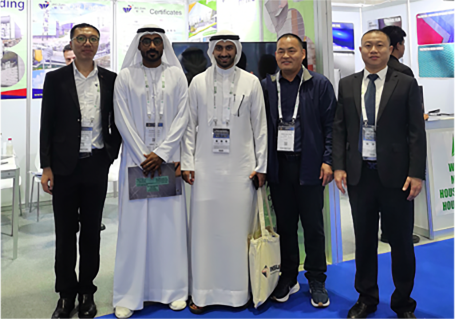
Dec . 16, 2024 23:00 Back to list
hpmc factory
The HPMC Factory An Overview of Production and Applications
Hydroxypropyl Methylcellulose (HPMC) is a versatile, cellulose-based polymer widely used in various industries, including pharmaceuticals, construction, food, and cosmetics. The production of HPMC takes place in specialized factories, where strict adherence to quality control and safety standards is paramount. This article explores the operational dynamics of an HPMC factory, the production process, and its diverse applications.
Production Process
The manufacturing of HPMC primarily involves the following key steps sourcing raw materials, chemical modification, drying, and granulation. The process begins with cellulose, a naturally occurring polymer, derived from wood pulp or cotton. This cellulose undergoes etherification, where it is reacted with propylene oxide and methyl chloride in controlled conditions to introduce hydroxypropyl and methyl groups. This modification enhances the solubility and functional properties of cellulose, making it suitable for various applications.
Following the chemical reaction, the resulting polymer undergoes purification to remove any unreacted chemicals. This step is crucial to ensure the final product meets industry standards and is safe for consumer use. Once purified, the HPMC is dried to reduce moisture content and then granulated into powder form. The granulation process ensures uniform particle size, which is essential for consistent performance in end applications.
Quality control is a vital aspect of production in an HPMC factory. Throughout the manufacturing process, samples are regularly tested for purity, viscosity, and solubility to ensure compliance with specifications. Advanced laboratory equipment and trained personnel are essential in maintaining the high standards required in the industry.
Applications of HPMC
hpmc factory

HPMC is renowned for its versatility and is utilized in various sectors. In the pharmaceutical industry, it serves as a binder and film-forming agent in tablet formulations. Its controlled-release properties make it an ideal excipient for sustained-release medications, enhancing patient compliance and therapeutic efficacy.
In the construction sector, HPMC is used as an additive in cement and mortar formulations. It improves workability, water retention, and adhesion properties, which are critical for achieving optimal results in construction projects. The inclusion of HPMC also contributes to increased durability and reduces the risk of cracking in finished structures.
The food industry leverages HPMC as a thickening agent and stabilizer. It is often found in processed foods, sauces, and dressings, aiding in texture improvement and shelf-life extension. HPMC is considered safe for consumption, making it a popular choice among food formulators looking to enhance product quality without adding artificial ingredients.
In cosmetics and personal care products, HPMC serves as a thickener, emulsifier, and film-forming agent. Its ability to create stable emulsions and deliver active ingredients effectively makes it a valuable component in lotions, creams, and gels. Additionally, HPMC’s non-toxic nature aligns with the growing consumer demand for safe and natural beauty products.
Conclusion
The HPMC factory plays a crucial role in producing this multifunctional polymer, which has a wide range of applications across various industries. The combination of advanced manufacturing processes, stringent quality controls, and versatility in application underscores the importance of HPMC in modern production. As industries continue to evolve, the demand for high-quality HPMC is expected to grow, further solidifying its position as a fundamental ingredient in numerous products that enhance our daily lives. As technology advances, we can anticipate even more innovative applications for HPMC in the future.
-
Versatile Hpmc Uses in Different Industries
NewsJun.19,2025
-
Redispersible Powder's Role in Enhancing Durability of Construction Products
NewsJun.19,2025
-
Hydroxyethyl Cellulose Applications Driving Green Industrial Processes
NewsJun.19,2025
-
Exploring Different Redispersible Polymer Powder
NewsJun.19,2025
-
Choosing the Right Mortar Bonding Agent
NewsJun.19,2025
-
Applications and Significance of China Hpmc in Modern Industries
NewsJun.19,2025







